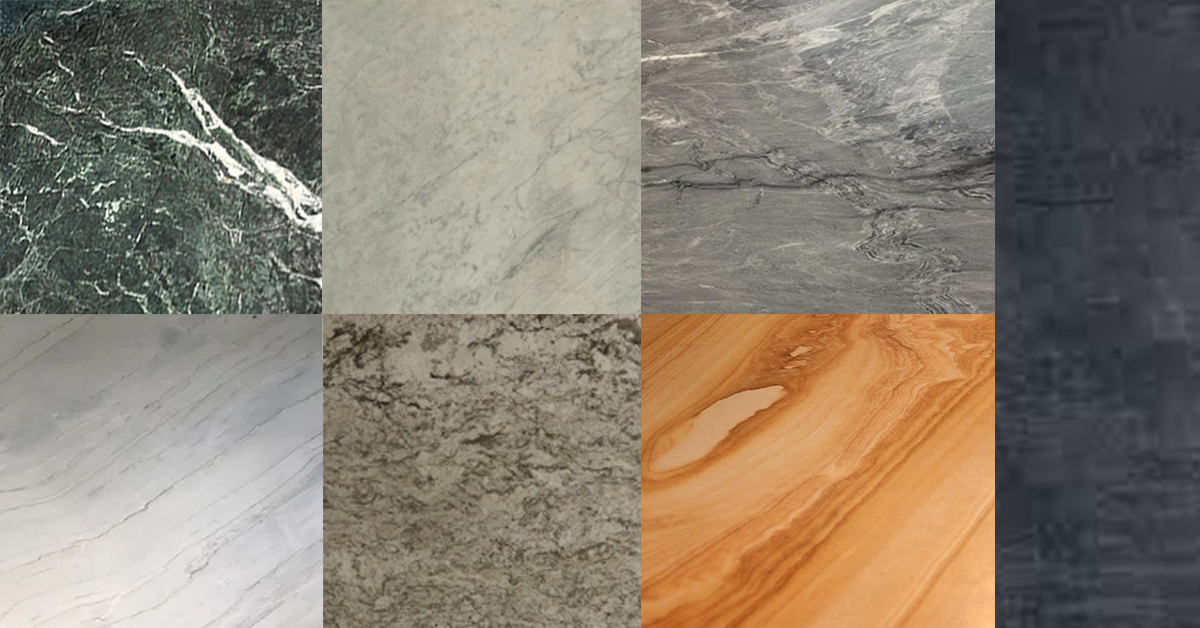The most familiar natural stone types that are used in countertops and most home applications fall into three categories: Igneous, metamorphic, and sedimentary.
- Igneous stone, such as granite, is formed mainly with volcanic material. Liquid magma underneath the earth’s surface solidifies while mixing with mineral gases and liquids to create different formations and colors.
- Metamorphic stones were made from a natural from of stone that was transformed by a mixture of heat, pressure, and minerals. These types of stone include quartzite, marble, serpentine, and slate.
- Sedimentary stone comes from organic elements where small sedimentary pieces accumulated to form rock beds and were bonded through millions of years of heat and pressure. They include limestone, sandstone, soapstone, onyx, and travertine.
Read more to learn a little about these different types of stone and the kinds of applications they are used for.
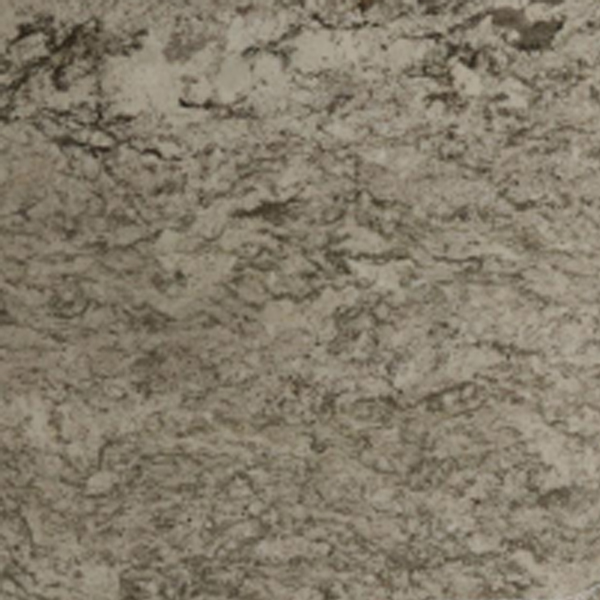
Granite
Granite is a hard, igneous rock that has become one of the most popular natural stones on the market. Available in a striking array of colors; granite’s durability and longevity make it ideal for kitchen countertops and other heavily used surfaces including countertops tops and floors.
Granite resists heat is bacteria-resistant, and it is not affected by citric acid, coffee, tea, alcohol, or wine. It is also nearly impossible to scratch and with proper cleaning will not stain under normal use (ask your professional contractor about sealants available to further improve resistance to staining.)
Because of its exceptional strength, granite is also well suited for exterior applications such as cladding, paving, and curbing.
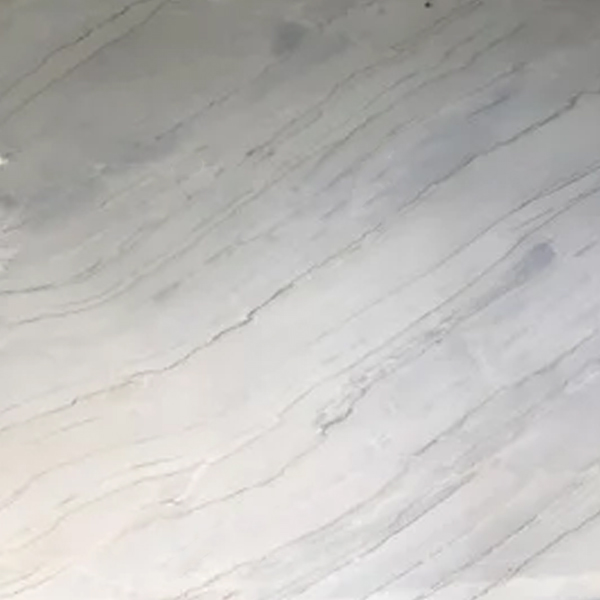
Quartzite
Quartzite is a metamorphic rock which was originally pure quartz sandstone that was converted into quartzite through heating and pressure. It is naturally strong, resists heat and is hard to stain, though it will need to be sealed in many applications.
Quartzite is extremely popular due to its marble-like appearance and granite-like properties. Pure quartzite is usually white to grey, though quartzites can include shades of pink, red, yellow, green, blue, and orange.
Quartzite is often used for kitchen countertops, to cover walls, as roofing tiles, in flooring, and for stair steps.
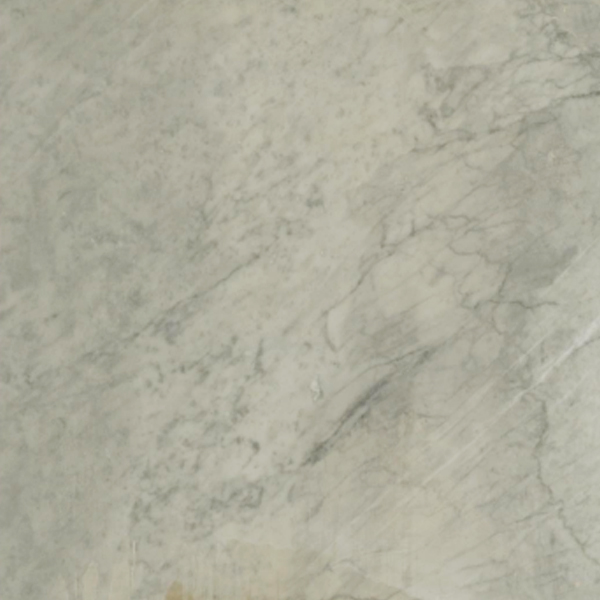
Marble
Marble is found around the world in the mountainous regions of places like Canada, Italy, Germany, Spain, and the United States. It’s sweeping lines, beautiful colors and high polish convey a unique look of elegance. Because of its beauty, marble is a popular choice for floors, wall coverings, countertops, bathroom walls, floors, vanity tops, tub decks, and showers.
In many cases marble, can be vulnerable to mild acids, including those commonly found in kitchen and bar settings. If selecting marble, you should research the specific strengths and weaknesses of your choice accept the maintenance that may be required in certain applications.
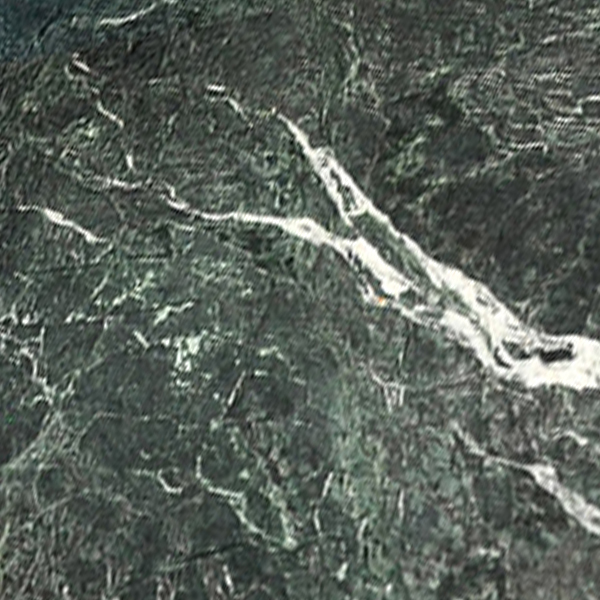
Serpentine
Often mistaken for marble is serpentine, which exhibits greater acid resistance and abrasion resistance than marble. These properties make serpentine a common choice for both kitchen counter and outdoor applications.
While it resists scratches and damage from acidic substances better than true marble, serpentine is only available in one color — green. Serpentine is often referred to as “green marble.”
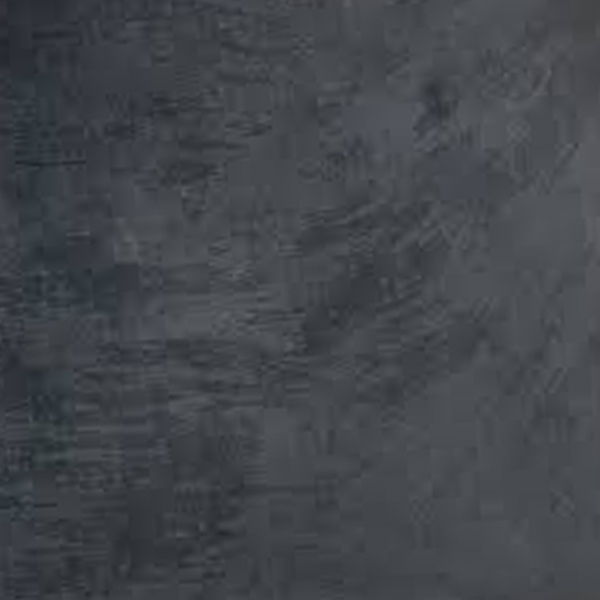
Slate
Slate is a dense, metamorphic rock produced by the compression of sediments such as clay and shale.
Its coloration is less bold than granite or marble, but slate makes it easier to create countertops with a more uniform appearance in shades of black, charcoal, gray, pewter, and brown.
Slate is not a terribly common choice for kitchen countertops. However, it is highly versatile and has a long history of use for roofing, flooring, gravestones, paver stones, and more. (Did you know the phrases “blank slate” and “clean slate” both come from slate’s common use as a chalkboard?)
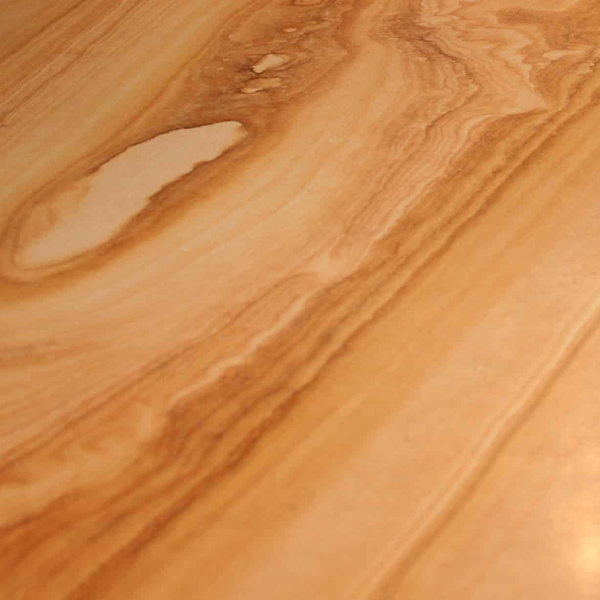
Sandstone
Like granite and marble, sandstone is mined and cut from solid stone. Standard finishing leaves the counters with a bit of texture, while polished sandstone countertops have an elegant sheen.
Sandstone gives you earth tones with rich depth and can show hues of rose, mauve and other colors. It is frequently used for fireplace facings, chimneys, garden walls, patio benches, and around pools.
The biggest concern about sandstone is that it is very porous and will quickly absorb oil and other liquids that will stain it if the stone is not properly sealed (and periodically resealed). It is not known for its strength or resilience against scratches.
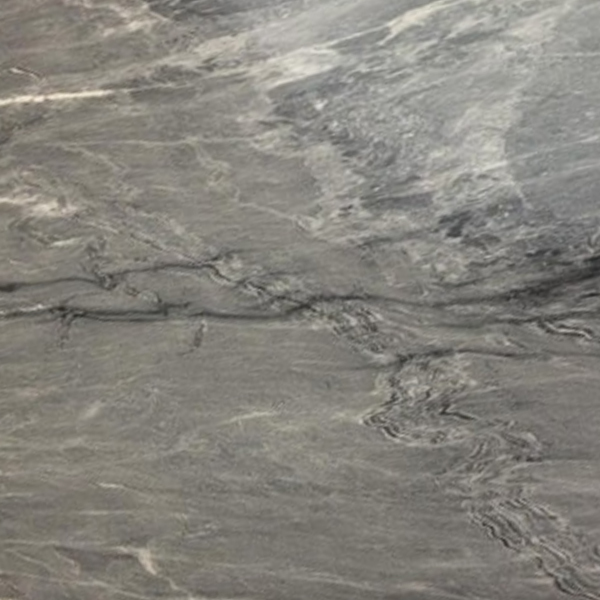
Limestone
Limestone is widely used as a building stone because it is readily available and easy to handle. Popular applications include countertops, flooring, interior and exterior wall cladding, and exterior paving. It has been used indoors and outdoors throughout the history of mankind to create some of the world’s most famous architecture.
Limestone colors are generally pure white to off-white. But can include color variations such as beige, ivory, brown, gray, red, and yellow. Some things to note about limestone is that it is porous, as well as softer and more chemically sensitive than marble and granite. So, maintenance and care is very important.
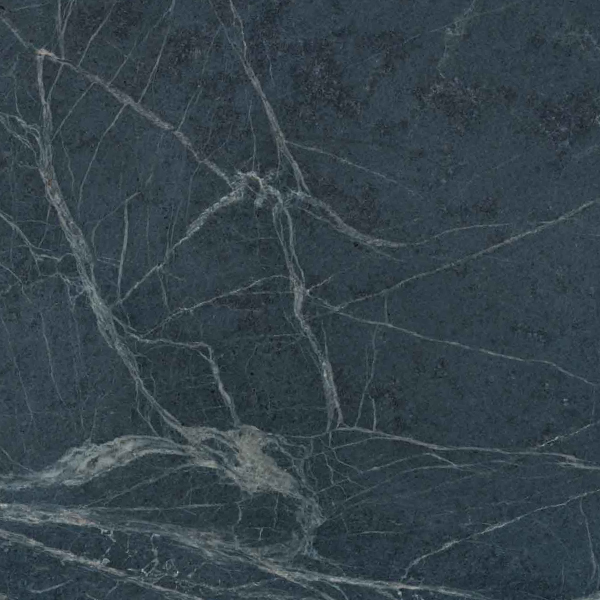
Soapstone
Popular uses of soapstone include kitchen countertops, bathroom vanities, fireplace surrounds, stoves, and stair treads. Care and maintenance is easy, but different than other stone types, and involves applying mineral oil to your soapstone countertop.
Soapstone is a dark grey or green variety of talc and is a popular choice when trying to achieve an old fashioned or rustic look.
It is softer than many stone and can scratch more easily. However, it is non-porous, etch-resistant, and can handle a very high amount of heat.
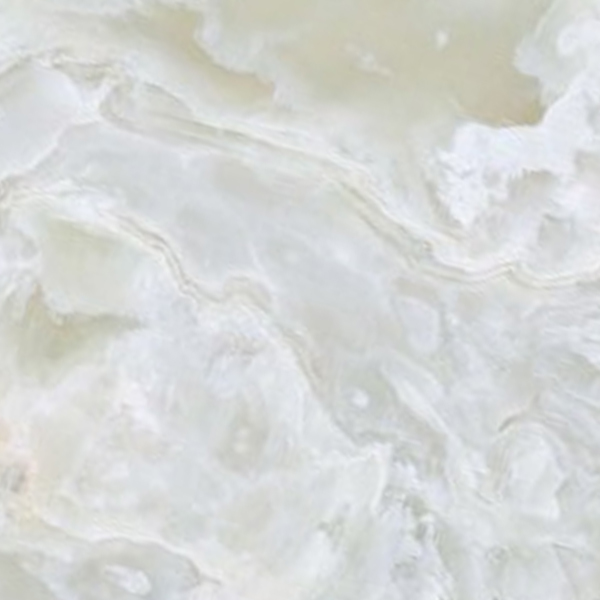
Onyx
Onyx can be translucent, it can be back-lit, it comes in a variety of colors, and has a modern look that makes it one of the most beautiful materials available.
Onyx is typically used in decorative applications, as it is the most vulnerable to chemical and mechanical incidents, and may scratch, stain, and etch more easily. But it’s decorative appeal can create beautiful, one-of-a-kind, distinctive looks.
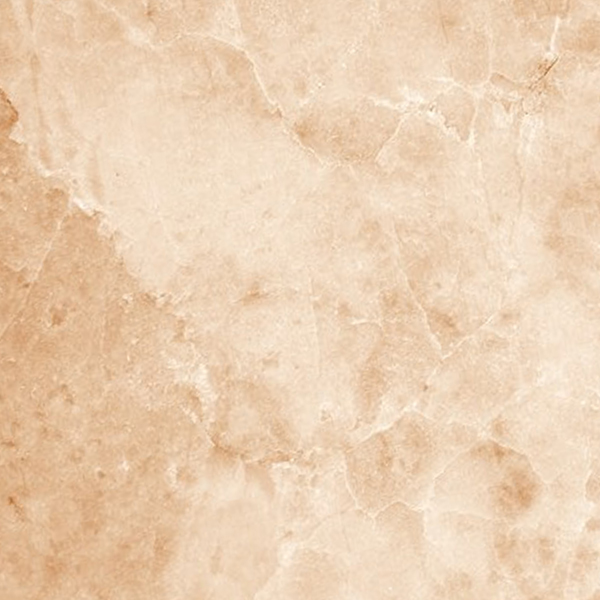
Travertine
Travertine is a type of limestone and one of the most popular stones for interior and exterior wall cladding, interior and exterior paving, statues, and curbing. Travertine, is also commonly used for both flooring and backsplashes.
This stone is valued for its reflective properties, as well as its durability against stains and weather conditions. However, it is highly reactive to acids, it is soft and porous nature, and is more sensitive to heat that many other natural stones.
(Did you know Colorado’s Hanging Lake was formed thanks to travertine?)
Visit the Natural Stone Institute’s website to learn all there is to know about stone.
When it comes to countertop options, the wide variety of available materials can be overwhelming, but we’re here to help! Send us a message, give us a call, or stop by our Denver showroom and we’ll help you choose the perfect material for your next countertop remodel.
